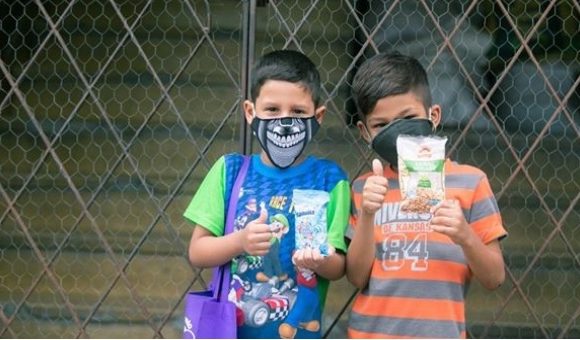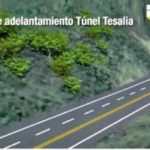Top Bilingual Primary Schools in Metro Medellin Now Offer Ornithology Studies

Bird-watching in decades past may have been considered the province of biologists and eccentrics. But it’s becoming an ever-more-popular pathway for appreciating, enjoying and defending the incredible beauty of nature.
Now, two of metro-Medellin’s top bilingual prep schools – Colegio Theodoro Hertzl (CTH, see earlier Medellin Herald report on 08/24/2015) and Colegio Montessori – are opening-up the fascinating world of ornithology (bird science) to primary-level students.
It’s another positive sign that ever-more people recognize, respect, conserve and trumpet Colombia’s unique status as hosting more bird species — some 1,925 documented to-date — than any country in the world.
Two years ago, ornithology classes here debuted at Colegio Montessori, coordinated by auto-didact birding expert Nelson Giraldo, a board member of Sociedad Antioqueña de Ornitologia (SAO) — the Medellin-based non-governmental organization (NGO) that has pioneered wild-bird conservation and education here for nearly 35 years.
Giraldo told Medellin Herald in an interview that some 60 students so far have benefited from the once-a-week, semester-long ornithology offerings, which include both classroom studies and guided bird-walks.
Students proudly wear special bird-club jackets as they enjoy observing and learning the ecology of many spectacular native birds at locations including the Medellin Botanical Garden, the Medellin Zoo and nearby bird-rich areas including Angelopolis and the El Salado nature reserve in Envigado.
Typical class sizes are 15 students per semester, including third-, fourth- and fifth-graders, Giraldo explained.
The school provides supervised bus transport to birding sites as well as four binoculars, which the kids share among themselves.
Classroom materials include SAO-published or SAO-sponsored guides including Birds of the Aburra Valley, Birds of the Upper San Miguel Area (where the Rio Medellin is born), as well as guest lecture-expositions, including two by current SAO president Martin Estrada.
CTH Latest Entrant
More recently, Colegio Theodoro Hertzl (CTH) began offering ornithology classes to third-, fourth-, fifth- and six-graders, as primary-level English/science teacher and ornithology auto-didact Alejandro Cartagena explained to Medellin Herald in recent school visits here — which included a bird-walk in the extensively forested, 6.3-hectare CTH campus.
While an inventory of birds at CTH has only been underway for less-than a year, Cartagena and students have already compiled a list of more than 100 species, opening eyes and insights into the lives of spectacular hummingbirds, tanagers, a resident barn-owl, migratory warblers, hawks and the amazing Common Potoo, which during daylight hours perches vertically, quietly and almost invisibly at the tail-end of certain branches.
The once-a-week, 1.5-hours-long ornithology offerings at CTH include classroom lectures on birding basics, bird anatomy, how to use binoculars, how to use field guides (including the SAO-published Photographic Guide to the Birds of Aburra Valley), how to use checklists, how to identify birds by their scientific nomenclature (Latin), by their local names (in Spanish), by their official English names, by sex (most birds are dimorphic) and by the family groups to which species belong.
Kids are also being introduced to the world-leading “Ebird” computerized system for recording bird observations.
They’re also learning about bird habitat and food requirements, which show that most birds and most other wildlife typically don’t benefit from destruction of natural forests, streams and pastures, or from monoculture plantings of trees or crops — such as the massive planting of exotics including Eucalyptus and non-native pine trees.
Students also are helping to plant bird-friendly trees and bushes, which are now flourishing in several areas at CTH. In some places, lettered signs have been attached to plants and trees in bird-friendly areas so that kids can learn their scientific and Spanish names.
They’re also regularly bringing certain fruits and grains to bird feeders on the grounds – one way of teaching that “nature is a commitment,” as Cartagena explained here.
While many young children are by nature noisy and easily distracted, Cartagena – whose bubbling enthusiasm for birds radiates to his students – nevertheless makes a point to encourage his kids to walk, whisper and concentrate when on bird-walks.
To make some of the learning tasks less formidable, Cartagena divides-up the work, giving each student one bird to study, including its appearance, size, habitat and feeding/foraging habits (divided into diurnal and nocturnal birds, for example).
Some students – including fifth-grader Matias Quintero — have shown exceptional ability to draw individual birds and rapidly make correct field identifications, as Medellin Herald learned during a visit to CTH and also during an earlier SAO-organized birding trip when he was accompanied by father Luis Fernando Quintero.
To date, CTH teacher Cartagena has been supplying most of the binoculars shared by his students. But there’s a proposal in-process that eventually might lead the school to buy several binoculars for shared student use. It’s also possible that in future, Cartagena might have a chance to expand ornithology classes to students in more-advanced grade levels at CTH – including some of his former primary-level students.
















